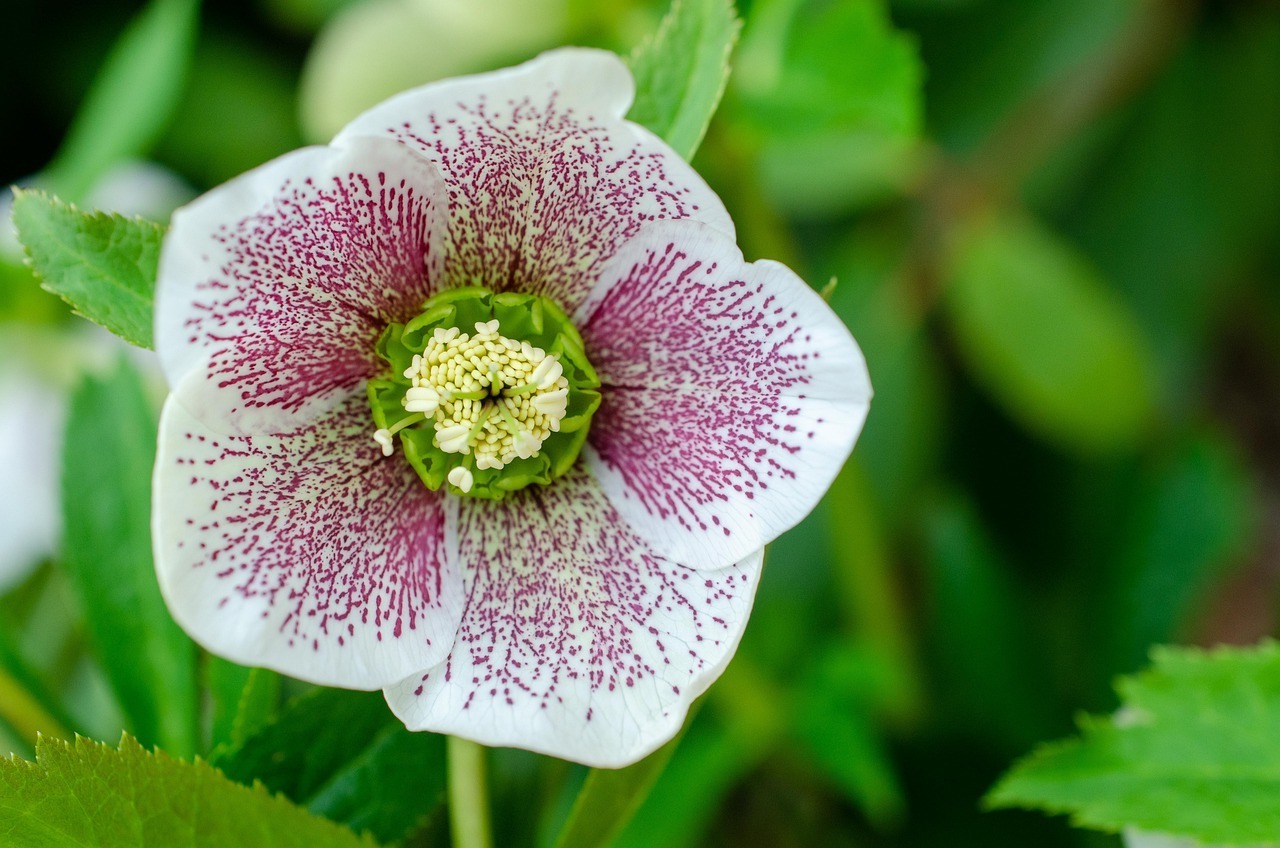
Hellebore is a fascinating plant with a rich history and unique characteristics. Known for its striking flowers, this perennial blooms in late winter or early spring, adding a splash of color when most other plants are still dormant. Did you know that hellebores are often called "Christmas roses" or "Lenten roses" due to their blooming season? Despite their beauty, all parts of the hellebore plant are toxic if ingested, making them a curious mix of allure and danger. Hellebores thrive in shaded garden spots and are relatively low-maintenance, making them a favorite among gardeners. Their ability to resist deer and pests adds to their appeal. Ready to learn more about this intriguing plant? Let's dive into 28 fascinating facts about hellebores!
What is Hellebore?
Hellebore, also known as the Christmas or Lenten rose, is a perennial plant that blooms in late winter or early spring. These flowers are beloved for their beauty and resilience.
- Hellebores belong to the Ranunculaceae family, which also includes buttercups and anemones.
- The name "Hellebore" comes from the Greek words "elein" (to injure) and "bora" (food), hinting at its toxic nature.
- These plants are native to Europe and Asia, particularly in mountainous regions.
- Hellebores are evergreen, meaning their leaves stay green throughout the year.
- They are known for their cup-shaped flowers, which come in various colors like white, pink, purple, and green.
Growing Conditions for Hellebore
Hellebores are hardy plants that can thrive in a variety of conditions. However, they do have some preferences that can help them flourish.
- They prefer partial to full shade, making them perfect for woodland gardens.
- Hellebores thrive in well-drained soil rich in organic matter.
- These plants are drought-tolerant once established, requiring minimal watering.
- They can tolerate cold temperatures, often blooming even when snow is on the ground.
- Hellebores benefit from a layer of mulch to keep their roots cool and moist.
Hellebore Varieties
There are many different types of hellebores, each with unique characteristics. Here are some popular varieties.
- Helleborus niger, also known as the Christmas rose, typically blooms around Christmas time.
- Helleborus orientalis, or the Lenten rose, blooms in early spring and has a wide range of flower colors.
- Helleborus foetidus, known as the stinking hellebore, has a unique smell and greenish flowers.
- Helleborus argutifolius, or Corsican hellebore, features pale green flowers and spiny leaves.
- Helleborus viridis, the green hellebore, has striking green flowers and is often found in woodlands.
Medicinal and Toxic Properties
Hellebores have a long history of use in traditional medicine, but they are also highly toxic.
- Ancient Greeks used hellebore as a purgative to treat various ailments.
- Despite its medicinal uses, all parts of the hellebore plant are toxic if ingested.
- Symptoms of hellebore poisoning include nausea, vomiting, diarrhea, and even heart problems.
- Hellebore was historically used in small doses to treat mental illness and paralysis.
- Modern medicine does not recommend using hellebore due to its high toxicity.
Hellebore in Folklore and Culture
Hellebores have been part of human culture and folklore for centuries, often associated with magic and mystery.
- In ancient times, hellebores were believed to ward off evil spirits.
- The plant was often used in rituals to purify homes and drive away demons.
- Hellebores are sometimes called "Christmas roses" because they bloom around the holiday season.
- In medieval Europe, hellebores were thought to have protective properties and were planted near homes.
- The flower has been a symbol of serenity and tranquility in various cultures.
Caring for Hellebores
Proper care can ensure that hellebores remain healthy and vibrant year after year.
Final Thoughts on Hellebores
Hellebores, often called Lenten roses, bring a touch of magic to gardens. These hardy perennials bloom in late winter or early spring, offering vibrant colors when most plants still sleep. They thrive in shady spots, making them perfect for woodland gardens. With over 20 species, each variety boasts unique flower shapes and hues, from deep purples to soft pinks.
Not only are hellebores beautiful, but they're also low-maintenance. They resist pests and diseases, needing minimal care once established. Their evergreen foliage adds year-round interest, providing texture and color even when not in bloom.
While hellebores are generally safe, some parts can be toxic if ingested. Always handle with care, especially around pets and children. Whether you're a seasoned gardener or a newbie, hellebores offer a rewarding addition to any garden. Their resilience and beauty make them a favorite among plant enthusiasts.
Was this page helpful?
Our commitment to delivering trustworthy and engaging content is at the heart of what we do. Each fact on our site is contributed by real users like you, bringing a wealth of diverse insights and information. To ensure the highest standards of accuracy and reliability, our dedicated editors meticulously review each submission. This process guarantees that the facts we share are not only fascinating but also credible. Trust in our commitment to quality and authenticity as you explore and learn with us.


